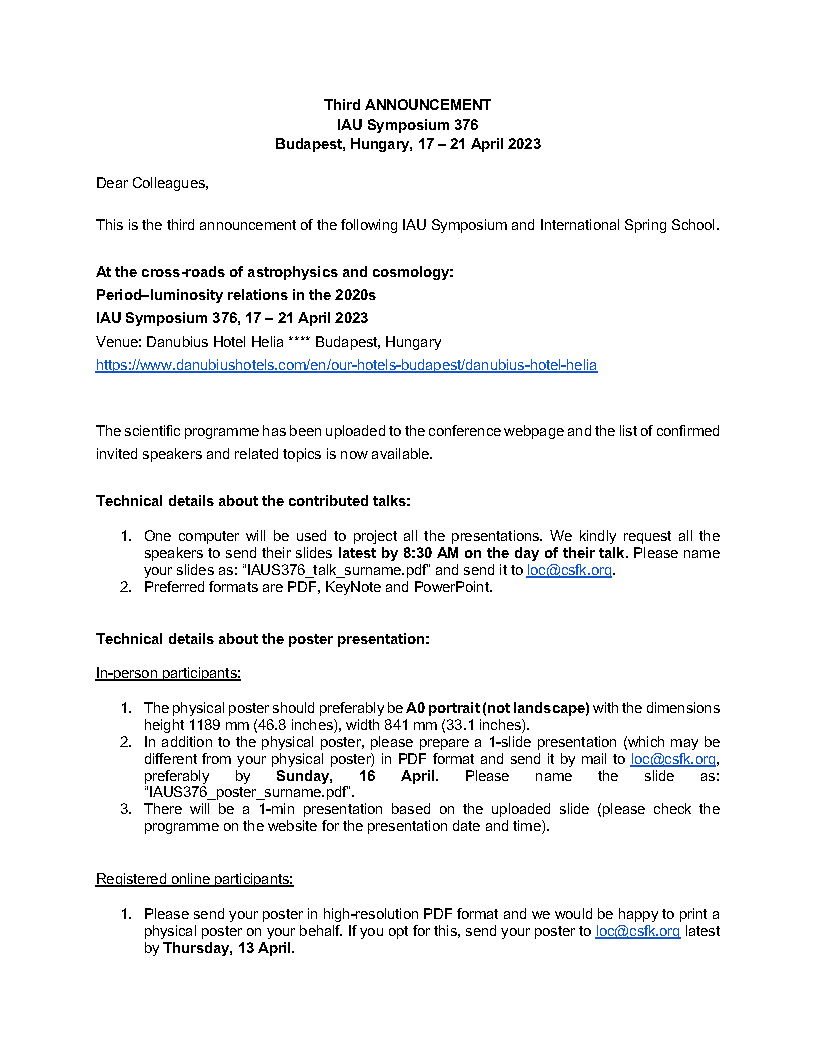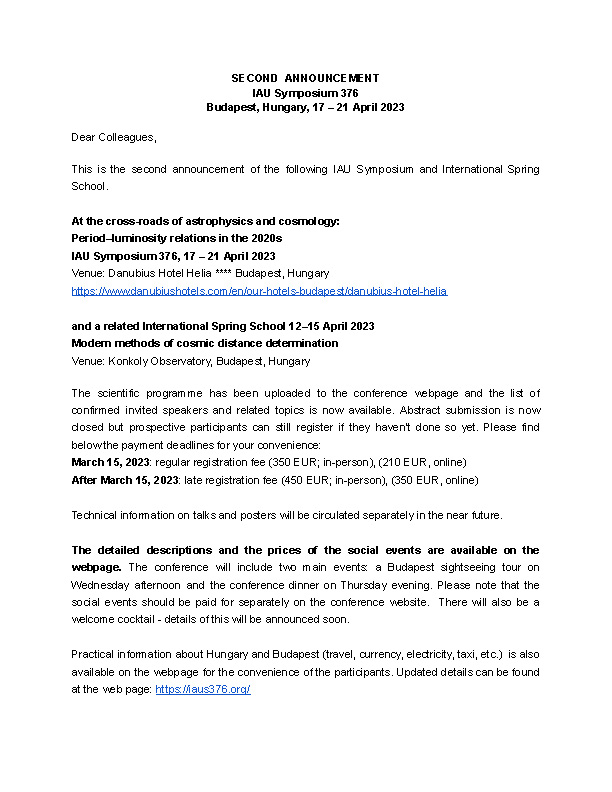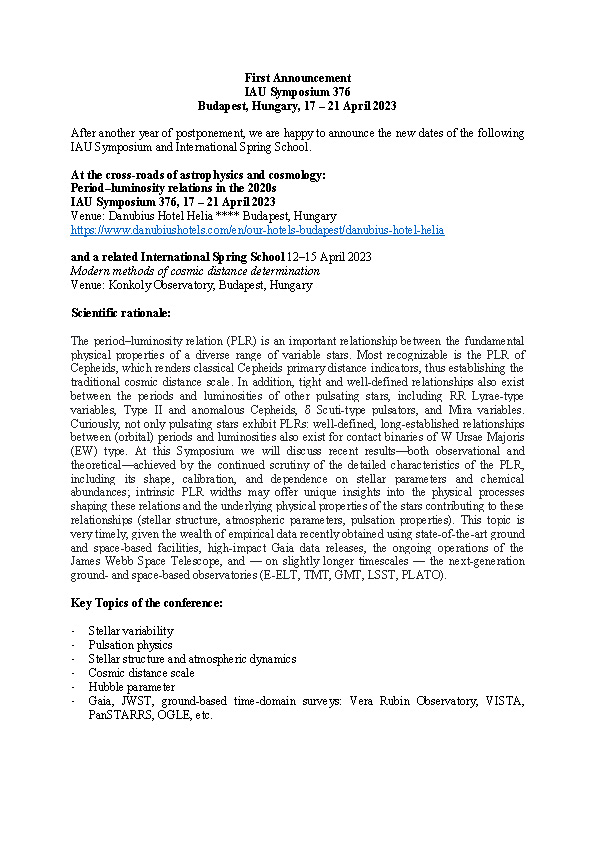
IAU Symposium 376 | 17-21 April 2023
At the cross-roads of astrophysics and cosmology: Period–luminosity relations in the 2020s
An event sponsored by IAU | hybrid conference in Budapest, Hungary
View the online posters
Gallery
Photo: Tamás Thaler
Scientific rationale
The period–luminosity relation (PLR) is an important relationship between the fundamental physical properties of a diverse range of variable stars. Most recognizable is the PLR of Cepheids, which renders classical Cepheids primary distance indicators, thus establishing the traditional cosmic distance scale. In addition, tight and well-defined relationships also exist between the periods and luminosities of other pulsating stars, including RR Lyrae-type variables, Type II and anomalous Cepheids, δ Scuti-type pulsators, and Mira variables. Curiously, not only pulsating stars exhibit PLRs: well-defined, long-established relationships between (orbital) periods and luminosities also exist for contact binaries of W Ursae Maioris (EW) type. At this Symposium we will discuss recent results—both observational and theoretical—achieved by the continued scrutiny of the detailed characteristics of the PLR, including its shape, calibration, and dependence on stellar parameters and chemical abundances; intrinsic PLR widths may offer unique insights into the physical processes shaping these relations and the underlying physical properties of the stars contributing to these relationships (stellar structure, atmospheric parameters, pulsation properties). This topic is very timely, given the wealth of empirical data recently obtained using state-of-the-art ground and space-based facilities, high-impact Gaia data releases, the impending operations of the James Webb Space Telescope, and—on slightly longer timescales—the next-generation ground- and space-based observatories (E-ELT, TMT, GMT, Plato).
 Adam Riess in MTA
Adam Riess in MTA




